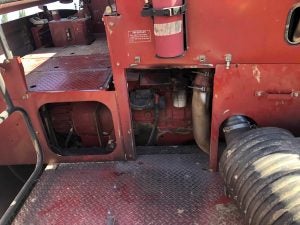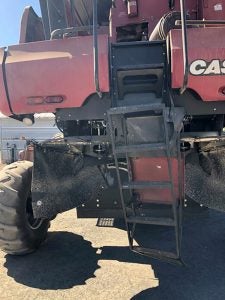Bypassing safety features and precautions during farm machinery repairs can quickly end in tragedy.
Especially during the busy seasons, long hours can make farmers tired and pressed for time, which is why national farm safety campaigns are particularly vocal at those times.
The Washington State Fatality Assessment and Control Evaluation (WA FACE) program at the Washington State Department of Labor & Industries has investigated some heartbreaking events on farms over the years. Three incidents in particular — all of which resulted in the loss of life on the farm — stand out. Without a shortcut here or a missed step there, these incidents could have ended much differently.
In one, a 54-year-old farmer had left a combine with a bad solenoid in “reverse” after unsuccessfully trying to start it from the cab. When he went to the rear to “hot-wire” the machine at the starter access panel, the engine fired up and the combine began moving backward. The operator fell to the ground between the tires as he was descending the rear ladder with the combine in motion.
The combine had to be in “neutral” in order to start the engine with a key at the ignition. But because the engine was “hot-wired” at the starter solenoid, and the combine was in “reverse,” this and all other safety features were disabled.

Similar cases the organization has encountered have equally tragic endings, including that of a 68-year-old orchard owner who was crushed while attempting to jump-start his stalled tractor that was left in gear. There was also an incident in which a 67-year-old farmer was working under an older fixed-throttle tractor that finally fired up and ran over him.
But in the wake of these unfortunate farm events, there are lessons to be learned, ones that can play a vital role in protecting other agricultural operators who are working so closely with dangerous machinery.
Incident Prevention Strategies:
- Do not continue to use machinery that is in need of repair. Do not bypass machinery safety features by “hot-wiring” engines, as this disables safety mechanisms and may cause unexpected movement of the machine, endangering workers. Also regularly inspect that safety features operate as they should.
- Establish policies and practices that ensure combines and tractors are de-energized while being repaired and in neutral with emergency brakes engaged and wheels chocked when attempting to start the engine. Consider using procedures similar to lockout / tagout (LOTO) to control hazardous energy where the machine is shut down and the key is in the operator’s pocket before any maintenance or repair begins. Add these policies and procedures to your safety programs and safety trainings and ensure that all operators and mechanics are trained in them. This will allow operators and mechanics to make safe decisions and avoid being injured by unexpected machine movement.
- Follow the machinery or equipment manufacturer’s operator’s manual for maintenance procedures to ensure the safety of operators and mechanics. From the combine operator’s manual: Never leave the operator’s platform without first disengaging the machine drive mechanism, lowering the header, stopping the engine, applying the parking brake, and removing the ignition key. Manuals should be kept in machines or easily available and reviewed before maintenance begins. Contact equipment dealers or perform an internet search to replace missing or lost manuals for older machines. Go over operator’s manual safety procedures during safety meetings and instruct operators and mechanics to review manuals before beginning any maintenance or repairs.
- Inspect, maintain, and repair machinery and equipment as needed in a timely manner. Doing this will decrease the likelihood of a breakdown and help ensure that unsafe practices are not used.

By following these strategies, farms can better protect their workers and ensure future deaths will be avoided.
This article was written by Todd Schoonover, FACE program director, and Randy Clark, research investigator. Sign up here to receive WA FACE agriculture fatality and injury investigation reports, hazard alerts, data summaries, and shorter form narratives and slideshows.


